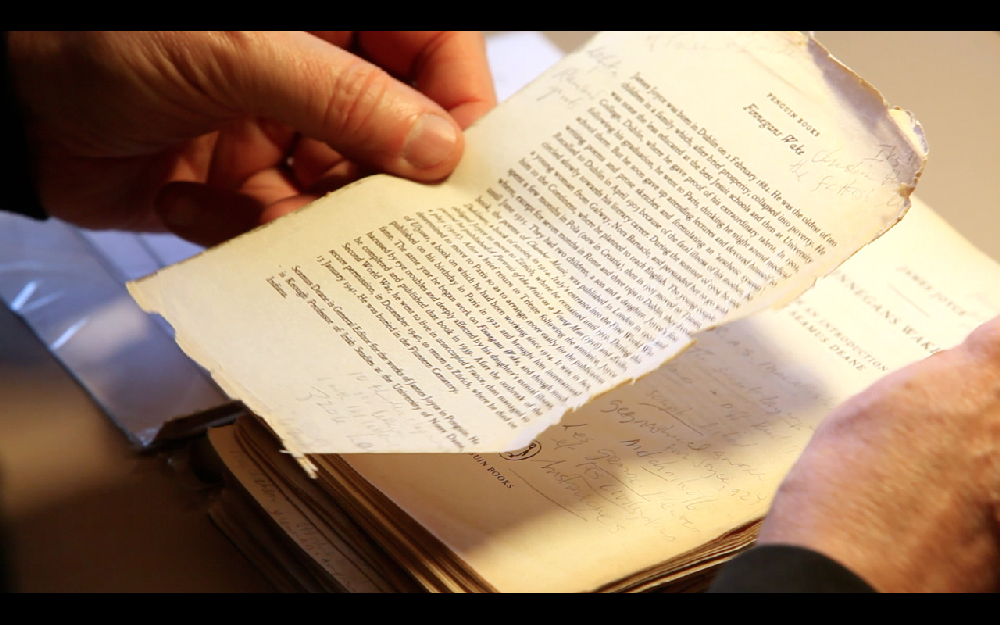Dora García
Dr. Murke Collected Silences: Culture 1985-1989
Dora García in collaboration with Daria Ghiu
Edited sound on magnetic tape, magnetic tape player
The “silences” that have been identified and edited together belong to the following Romanian cultural programs (in order of appearance):
Arte frumoase [Fine Arts] – 4 editions broadcasted on the following dates: 20 February 1985, 13 November 1986, 28 July 1988, 29 December 1988
Atlas cultural [Cultural Atlas] – 4 editions broadcasted on the following dates: 23 March 1985, 27 July 1986, 7 June 1987, 5 November 1989
Dialoguri culturale [Cultural Conversations] – 2 editions broadcasted on the following dates: 13 September 1985, 18 February 1989
Revista literară radio [The Radio Literary Review] –3 editions broadcasted on the following dates: 1 January 1985, 17 April 1988, 17 December 1989
Mioriţa. Revista de etnografie şi folclor [Mioriţa. The Ethnography and Folklore Review]– 3 editions broadcasted on the following dates: 1 October 1986, 18 February 1987, 4 November 1987
Research in the audio archives of Radio România, source identification, selection of shows and chronology, technical supervision: Daria Ghiu
Sound editing and transfer to magnetic tape: Bogdan Florea
This work has been realized with the kind permission and help of Radio România
“We spoke about many things,” writes Dora García about her visit in Timișoara and the conversations she had with numerous local writers including Adriana Babeti, Mircea Mihăieș, Petru Ilieșu, Tudor Creţu, Bogdan Munteanu, Alexandru Potcoavă, Goran Mrakic, and Borco Ilin. “But something really caught my attention: during the last years of Ceaușescu, everyone knew all too well what needed to be said, and what needed to be silenced. What needed to be silenced?”
During the same visit, Garcia was interviewed in Timișoara, by the art critic and a radio journalist for over a decade, Daria Ghiu. An inquiry into the relationship between radio and silence emerged for the artist from these successive interactions.
For a medium of communication reliant on audio, what form does silence take on the radio? And what does it signify in times when certain matters needed to be silenced? As with the protagonist of one of Heinrich Böll’s short novels, Dr. Murke’s Collected Silences, the artist in collaboration with Ghiu and with the support of sound engineer Bogdan Florea embarked in a similar, rather eccentric journey. They looked for silences on the radio. Silences that had not yet been cut out from the original magnetic tapes. The research in the archives of the national public radio broadcast Radio Romania focused on five cultural programs running between 1985-1989 whose content has been recently digitized. The collected silences were edited together into an audio composition that was then recorded on a magnetic tape, the original medium of the materials. The tape can be heard at La Două Bufniţe, a beloved bookstore in Timișoara and a landmark for the artist since her first trip.
In the process of research and editing, silence was continuously defined. It took the form of pauses in speech, sometimes as long as two minutes in total within the same show, surprisingly long for radio, where each second matters, and where time has a different value. Some silences are vocalized hesitations “aa”, or “er” which interrupt the flow of speech, mark a pause for reflection. Other silences have bodily textures, such as sighs, gasps, mumbles, or whispers often making the experience of listening uncomfortable. They convey emotions and intimacy. Was this what was left unsaid? Silence in Ceaușeșcu’s time, writes Herta Müller, was not a pause in the conversation, but altogether something else, another form of communication. Silence was the space of lasting thoughts, of what could not yet be expressed to words. But silence was principally a full bodily experience, a carrier of sensations in the realm of the non-verbal. AR
Dora García (b. 1965, Valladolid) is an artist, teacher and occasional curator, living in Barcelona and working in Oslo and Geneva. García has developed works on the GDR Political police (Rooms, Conversations, 24′, 2006, first presented at GfZK, Leipzig, Germany), the comedian Lenny Bruce (Just because everything is different… Lenny Bruce in Sydney, one-time performance, Sydney Biennale, 2008) and the rhizomatic associations of antipsychiatry (Mad Marginal book series, 2010–present, The Deviant Majority, film, 34′, 2010, part of her project The Inadequate, first presented at the Spanish Pavilion, 54th Venice Biennale). She has used classical TV formats to research Germany’s most recent history (Die Klau Mich Show, documenta 13, 2012), frequented Finnegans Wake reading groups (The Joycean Society, 53′, 2013), created meeting points for voice hearers (The Hearing Voices Café, 2014–present) and researched the crossover between performance and psychoanalysis (The Sinthome Score, 2013, and Segunda Vez, 2018).

Dora García, The Joycean Society, 2013, video still, 45′, courtesy of the artist
Dan Acostioaiei
Halil Altındere
Forensic Architecture
Anca Benera & Arnold Estefan
Michael Beutler
Pauline Boudry & Renate Lorenz
Irina Botea Bucan & Jon Dean
Filipa César & Louis Henderson
Kray Chen
Collection Collective
Céline Condorelli
Alexandra Croitoru
Decolonizing Architecture Art Residency
Chto Delat
Aslan Gaisumov
Dora García
Ane Graff
Alma Heikkilä
Ane Hjort Guttu
Gülsün Karamustafa
Behzad Khosravi Noori
Gunilla Klingberg
Vilmos Koter
Zac Langdon-Pole
Matts Leiderstam
Anne Low
Virginia Lupu
Taus Makhacheva
Liliana Mercioiu Popa
Metahaven
Ana Maria Millán
Malgorzata Mirga-Tas
Naeem Mohaiemen
Monotremu
Tanja Muravskaja
Ciprian Mureșan
Joar Nango
Thao Nguyen Phan
Ho Tzu Nyen
Pınar Öğrenci
Ahmet Ögüt
The Otolith Group
Trevor Paglen
Philippe Parreno
Gary-Ross Pastrana
Peles Empire
Lia Perjovschi
Agnieszka Polska
Ghenadie Popescu
Walid Raad
Vandy Rattana
Bella Rune
STEALTH.unlimited
Zhou Tao
Iulia Toma
Tur de Arhitectură
Mona Vătămanu & Florin Tudor
Anton Vidokle
Haegue Yang
Mădălina Zaharia
Zephyr
Želimir Žilnik
